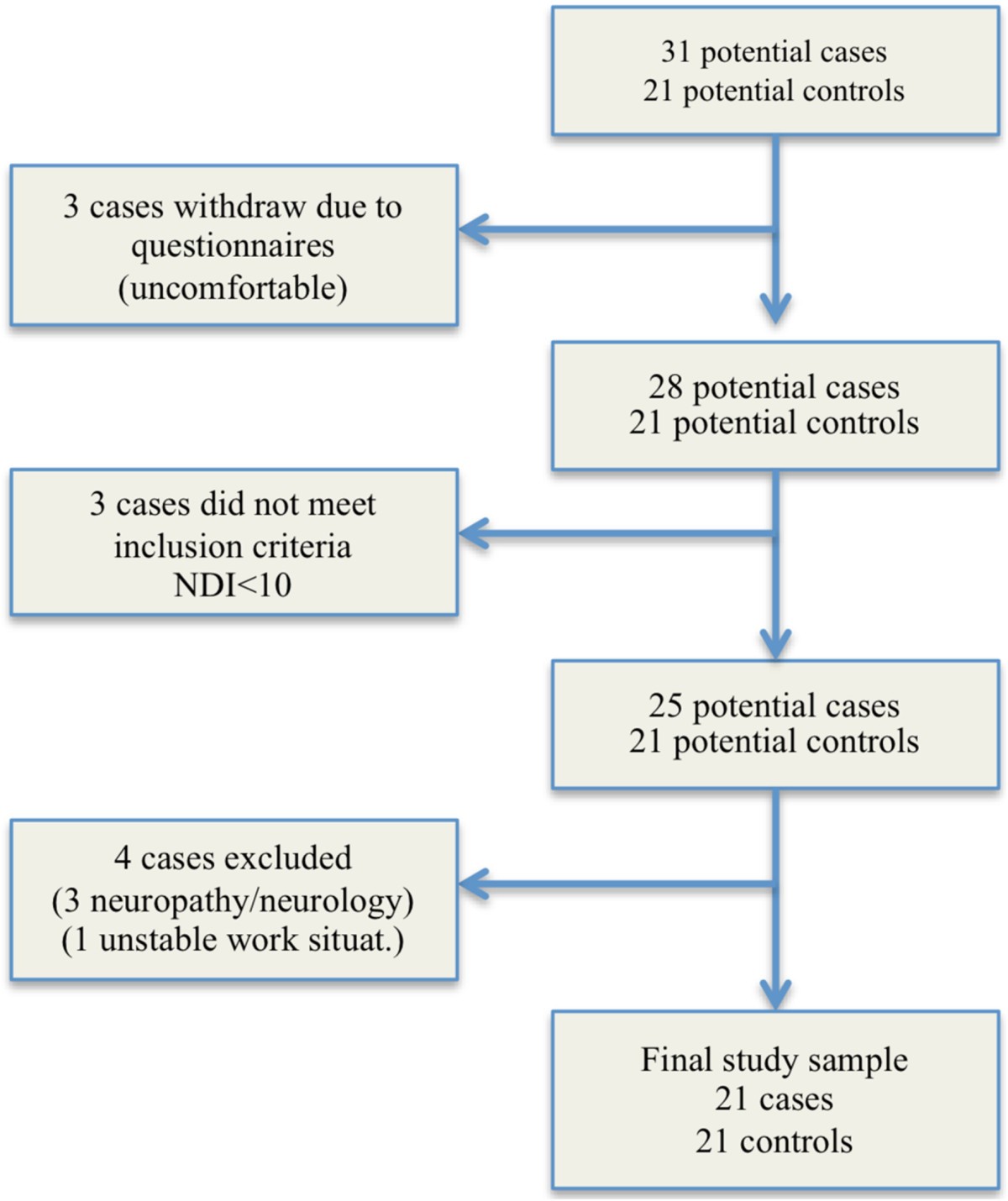
The results of both factor analysis and RA revealed a robust 2-factor structure, and a refined version with removal of item #7 was proposed.

The NBQ demonstrated acceptable psychometric properties when tested with CTT methods. The CNFDS has been shown to be strongly reli- able and internally consistent, and to have excellent construct validity, similar to other instruments used to evaluate neck-related disability. The devel- opers decided also not to include pain questions in the CNFDS, because these were considered to measure sep- arate domains their inclusion could also lead to problems with the unidimensionality of this question- naire.

The func- tional disabilities experienced by patients with NP were used as a starting point by an interdisciplinary team of physiotherapists, rheumatologists and other profes- sionals who aimed to develop this questionnaire as a self-reported tool, to avoid interviewer bias. Neck Disability Index), it was not derived from already existing questionnaires. The Copenhagen Neck Functional Disability Scale (CNFDS) was developed by Jordan et al., with the aim to make a new instrument to investigate the patient’s neck- related disability in contrast with other question- naires (e.g. However, both questionnaires can be appropriately filled out by the patient in the waiting room without assistance, so this aspect is not a major Filling out the NDI requires two minutes more than answering the COM. The inferiority of COM to assess pain and disability may be due to its global score being influ- enced by patients' assessment of function, well being, absenteeism and satisfaction, as opposed to the scores of NDI and NPQ, which only focus on pain and disability. This implies that using the COM may lead to the evolution of patients appearing to be more positive than it actually is. In addition, COM is insensitive to worsen- ing for both pain and disability, it reflects improvement in pain for patients denying any change, and it magnifies the amount of improvement for pain and, especially, disabil- ity (Table 6). Although internal validity is similar for all the questionnaires and differ- ences in correlation and reliability are small, COM is less reliable than NDI, and its correlations with all the other scales and questionnaires are lower than those for both NDI and NPQ.

NPQ does not detect worsening in dis- ability and it suggests pain improvement in patients deny- ing such an improvement (Table 6). According to these results, NPQ is the second best and COM is the worst. In addition, it is the only questionnaire for which the evolution of its score is consistent with external crite- ria for pain and disability (Tables 4 and 5) and for which effect sizes for pain and disability are consistent with patients' assessment of their own clinical evolution (Table 6). It is reliable and shows the highest correlations with results from instruments to measure pain, disability and quality of life. According to results from this study, NDI is more effective than NPQ and COM to assess neck pain disability.


 0 kommentar(er)
0 kommentar(er)
